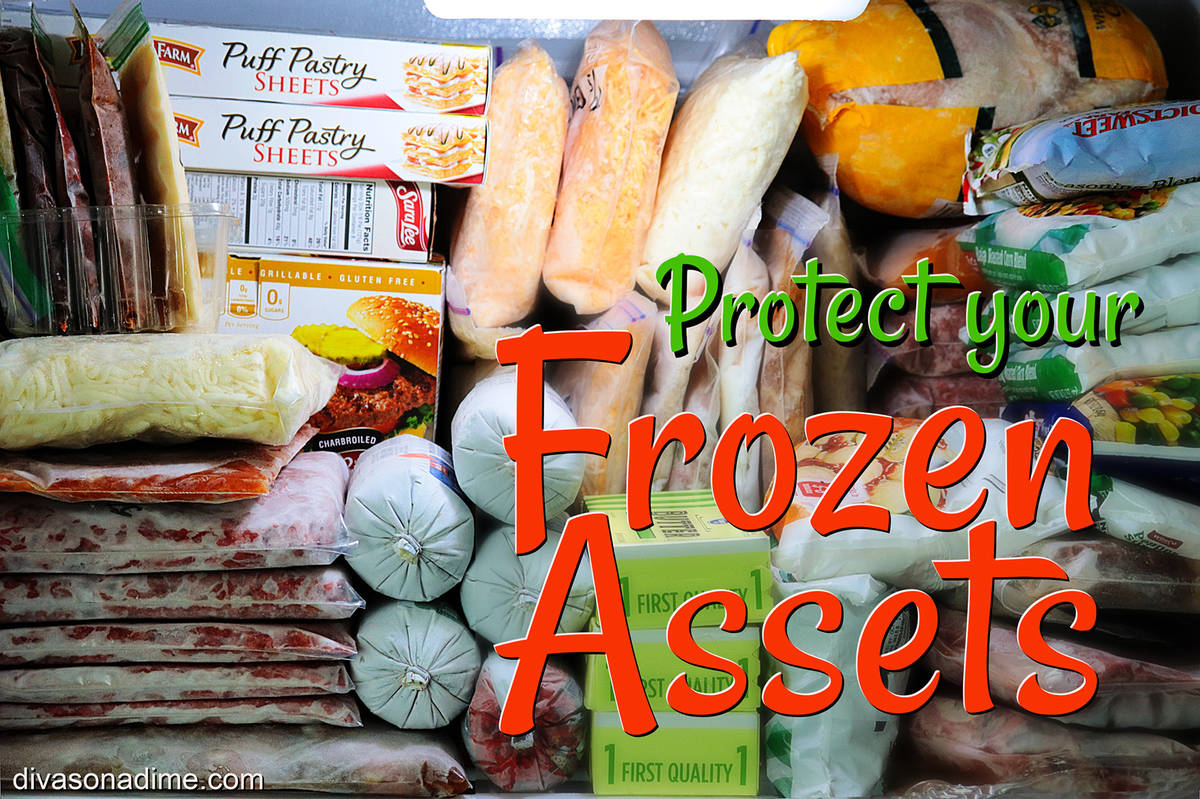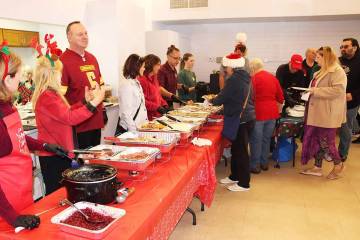Freezer cool way to save time, money
Freezing food saves time by reducing grocery store runs and money when you purchase sale items in quantity. Make the most of your investment by using your freezer to its full potential.
Here’s what ruins frozen foods. Ice, moisture and air are frozen food’s enemies. Freezing preserves food by slowing the growth of bacteria and reducing the rate at which natural decomposition (sorry, couldn’t think of a more appetizing word) happens. Most foods contain water, and frozen water becomes ice crystals. These crystals expand and break fragile cell walls resulting in some foods (looking at you, fruits and vegetables) becoming mushy and watery once defrosted.
When dry air circulates around frozen foods, it causes damage by dehydration. This is known as freezer burn. While freezer burned food is safe to eat, removing the yucky bits will improve the taste. Some say that’s what ketchup is for.
You can prevent freezer burn. Before freezing, prepare foods by wrapping them and storing properly to prevent damage. Be sure to remove as much air as humanly possible and use zipper-top freezer bags (not storage bags), heavy-duty plastic wrap, aluminum foil or freezer paper. All foods benefit from double wrapping.
When using freezer safe storage containers, fill almost to the top (to allow room for expansion) and place plastic wrap over the surface of the food before placing the lid.
Optimize space. Use storage containers that leave no unused space. I’m fond of zip-top freezer bags whenever possible. The zip-top baggies freeze flat and stack. A full freezer is a happy, energy-efficient freezer.
How to freeze meat and poultry. As soon as practical, remove foods from their store packaging and divide into meal-appropriate portions. For short-term storage, place into freezer bags, removing as much air as possible. For storage three months or longer, first wrap tightly in plastic wrap, then wrap again in foil, freezer wrap or freezer paper, and lastly pop it in a freezer bag.
Brushing meats with a little oil or adding marinade (a big glug of Italian dressing is perfect) before freezing protects meat from freezer burn and the meat marinates as it thaws. Win, win!
Label everything. Me: “I don’t need to label this; I know I’ll remember.” Narrator: “She would not remember. In fact, she immediately forgot what it was.” Sound familiar? Write on everything with a Sharpie pen. I keep mine in my freezer bag box, so it doesn’t disappear. Write what it is, the date and any details.
Also, keep an inventory of what you have in the freezer. It’s much easier to look at a list than stare longingly into the freezer abyss yearning for inspiration.
Cool before you freeze. To improve the quality of your frozen foods, cool them to refrigerator temperature before putting in the freezer. Besides, putting hot food in the freezer can partially thaw other foods, and that’s bad.
Little bits. When recipes call for a small amount of an ingredient, save the remainder for next time in small baggies or freeze in ice cube trays, then store in baggies. This is especially good for things like chipotle in adobo, tomato paste, coconut milk and enchilada, pizza and tomato sauces.
Some foods freeze poorly. Don’t freeze produce with high water content and expect to enjoy them like raw later. This holds true for foods such as apples, citrus, salad greens, cucumber, bean sprouts and raw potato. Some can be cooked after freezing, like tomatoes, onion, peppers, mushrooms and celery. Some can be eaten while frozen, like grapes and watermelon.
And don’t freeze hard boiled eggs, mayonnaise, meringue, gelatin, sour cream, cottage cheese or custards.
Use ’em or lose ’em. When you stock, rotate the oldest foods to the front and plan to use them. Some foods expire faster than others so use those first. Check https://www.foodsafety.gov for how long items will last in the freezer.
Housekeeping. Keep your freezer thermostat turned to zero or lower. Twice a year, vacuum the exterior coils behind the freezer to maximize cooling efficiency.
In case of emergency. If you lose power, do not open the freezer door. Foods should remain frozen for about 24 hours, leaving you time to resolve the issue.
The No. 1 rule of freezing: If it didn’t taste good to begin with, it won’t taste any better after freezing. In fact, it will probably taste worse. Don’t wait until food is on its way out before freezing. It’s a freezer, not a time machine.
Lifestyle expert Patti Diamond is a recipe developer and food writer of the website “Divas On A Dime – Where Frugal, Meets Fabulous!” Visit Patti at www.divasonadime.com and join the conversation on Facebook at DivasOnADimeDotCom. Email Patti at divapatti@divasonadime.com.









